Touted as the most romantic place in India, Udaipur sits alongside Lake Pichola nestled in amongst the Aravalli Hills south of Jodhpur. It is not only famous as being the most romantic spot in India, it has been the setting for blockbuster movies including James Bond’s Octopussy and The Most Exotic Marigold Hotel, making the lake vistas instantly recognisable to millions.
It’s not just a picture postcard lake though. Udaipur has a long history going back to 1568 when it was founded as the new capital of Mewar following the sacking of Chittorgarh by the Mughals. The City Palace, the largest palace in Rajasthan was founded in 1599, and there are a plethora of other palaces including the iconic Lake Palace created from white marble that appears to be floating on the surface of the lake (now a hotel costing from 40,000 rupees, £400 per night). There are also temples dating back to a similar period dotted around, and a number of havelis and later buildings adding to the mix and atmosphere of this city of around half a million people.
Our hotel here, the Raj Palace, is situated on a narrow, busy road leading up toward the main bazaar area and the City Palace. It’s a dusty grimy road and the outside of the hotel is entirely in keeping with its surroundings. Up some steps and twenty metres further in through a gateway is a shady open air courtyard in the centre of which is a swimming pool with fountains splashing water across the surface and which is surrounded by trees. Adjacent in another courtyard is a restaurant and café. Inside the hotel the floors are polished marble and the rooms cool and clean with shiny new bathrooms (in ours at least).
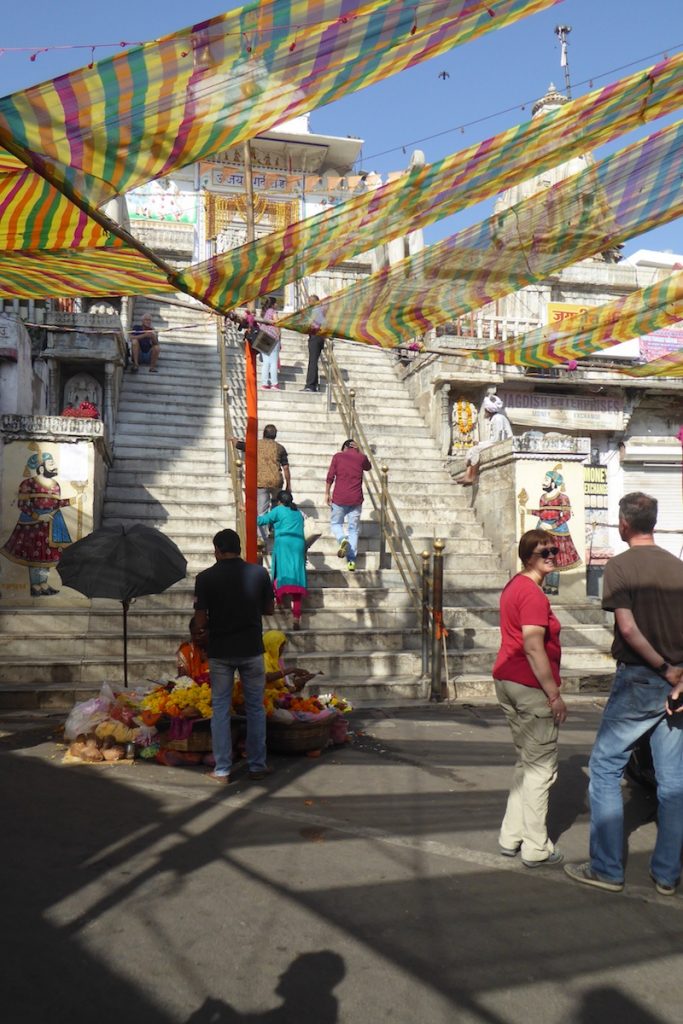
The food in the restaurant (we arrived at lunchtime) proves to be tasty (voted the best garlic naan so far by some of the group) and as usual no more than £2 for a vegetarian curry dish. Later that afternoon, the group met up for a walking tour around the area to get our bearings and see the main places of interest. A walk of less then ten minutes finds us at the bottom of the street leading up to the City Palace and at the foot on some steep steps, flanked by elephant statues, leading up to the Jagdish Temple dedicated to Lord Vishnu. The street is decked out with coloured garlands, silver tinsel and lights in preparation for the festival of Dusserha which, the celebrations for which will reach their pinnacle on Friday.
The street itself consists of restaurants and typical tourist stalls (selling clothes, textiles, water etc.) but with a sprinkling of art shops. Udaipur is actually a little hotspot for art as well, adding to its appeal. The rest of the walk takes us to visit a tailor cooperative where we can get clothes made, jewellers (there is lots of jewellery around too) and on to the ghats on the lakeside.
A quick explanation. Ghats are ceremonial steps or platforms situated on the banks of a river or lake. They are used for a number of different, holy, purposes in India. There are burning ghats used for cremations, bathing ghats used to bathe in the Hindu holy rivers and lakes to cleanse the body and soul or they are just used by worshippers to make offerings and carry out their holy duties. Ghandi was cremated on a ghat on the banks of the river in Delhi, and his ashes sprinkled from a ghat onto the holy lake in Pushkar.
Curiously, stepping through a colonnade onto the square by the lake leaves the city noise behind replacing it with the gentle sounds of lapping water and the melody from a man playing a traditional stringed instrument for money (an Indian busker?). Some ladies and children are preparing their offerings and the smell of incense pervades the air. The sandstone of the surrounding buildings glows golden in the late afternoon sun.
The consensus now is that a beer would hit the spot and the nearby Rainbow Restaurant, with its first floor terrace overlooking the lake, seems ideal. Sometimes when you’re travelling, particularly in a hectic country like India, finding a nice spot to while away a couple of hours chatting and unwinding is just what you need. And sitting on the terrace with a cold beer and watching the sun set over the lake and the lights of the Lake Palace Hotel and the other hotels and palaces wink on one by one makes you appreciate why Udaipur is dubbed the most romantic place in India.
The next morning our tour of the city starts in earnest.
With a façade 244metres long and up to 30 metres high, the City Palace dominates the lakeside. It was started in 1599 by Maharana Udai Singh II and was added to over the years by a succession of Maharanas to become the largest palace in India and reach its current state. Part of the palace is still used as a private residence, but the main part is now open to the public as the City Palace Museum.
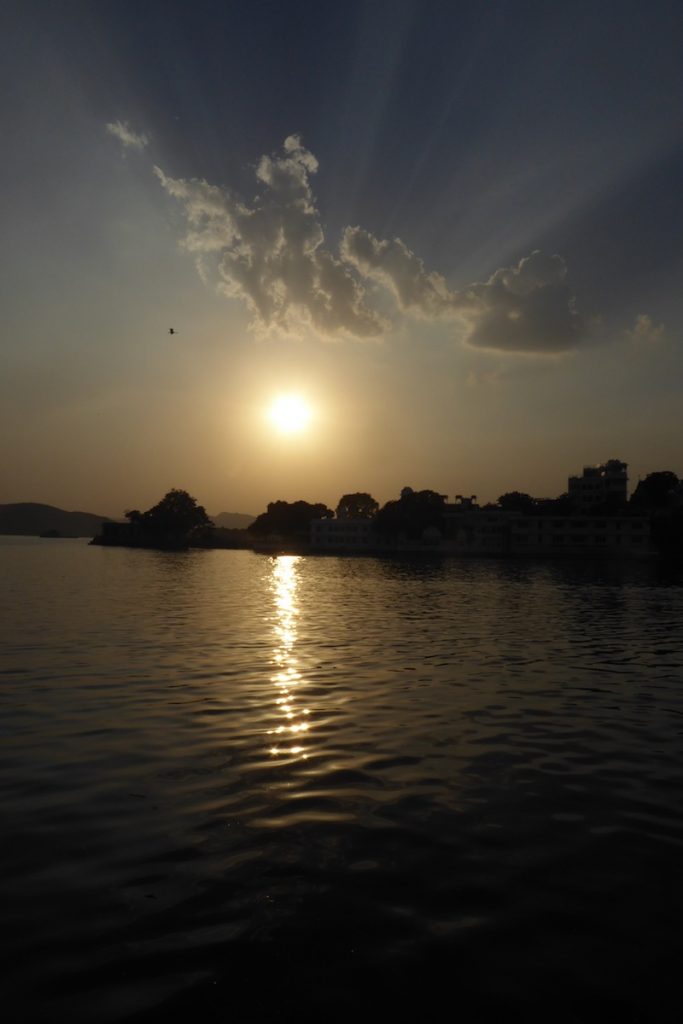
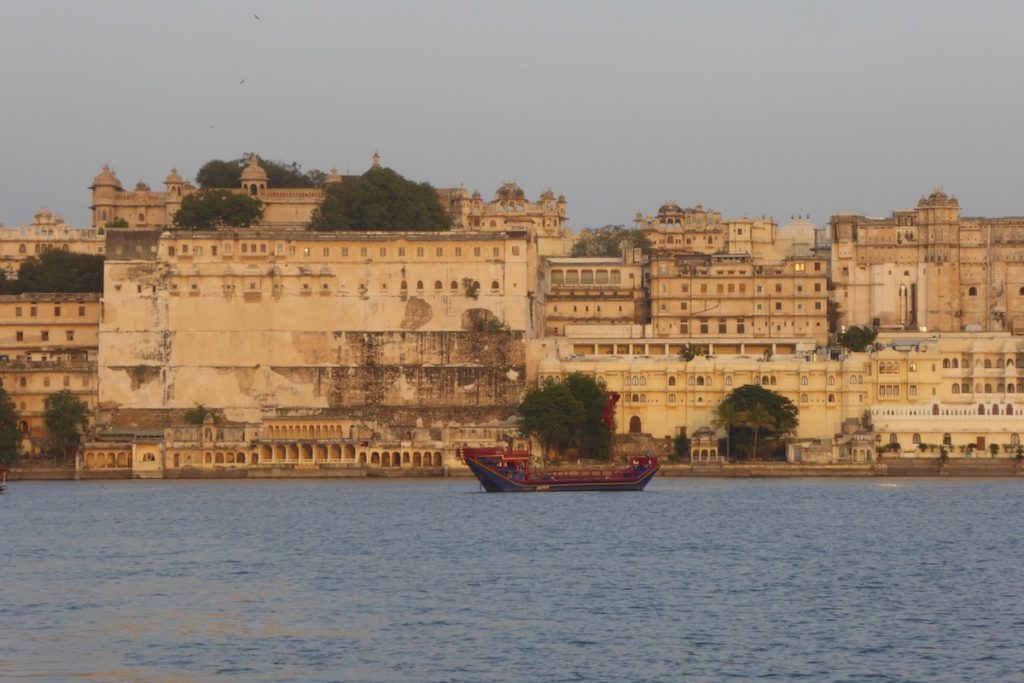
Sanjeev arranged a local guide to take us around the palace, a slip of a fellow who prided himself in knowing every clichėd British phrase there is. Luvly jubly, and by dropping in James Bond lines whenever he could. I think he fancied that he was actually 007 himself… Joking aside, he was quite informative and dropped in plenty of bits of background information (such as the difference between a Maharaja and a Maharana) and pointed out things we’d never have guessed about (the strange bumps in the main courtyard which apparently were ‘elephant pillows’). The palace was the usual mix of grand courtyards, elaborate and opulent rooms and historical exhibits.
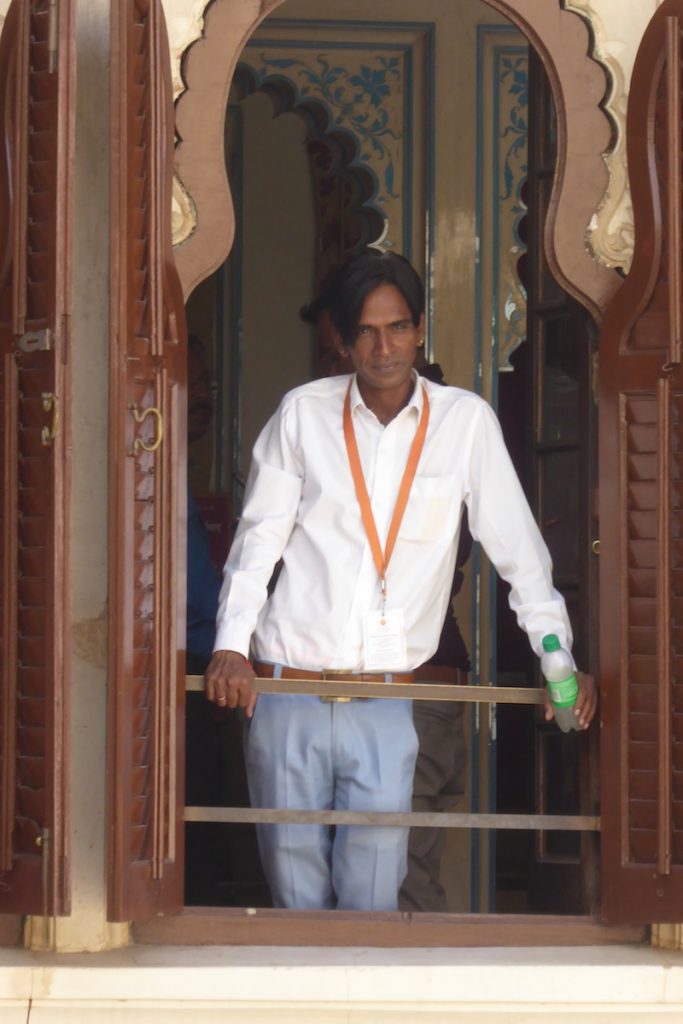
What sets the City Palace apart though are the exquisite ceramic and glass mosaics and the spectacular views, on one side across the city of Udaipur and on the other the lake, palaces and the mountains beyond.
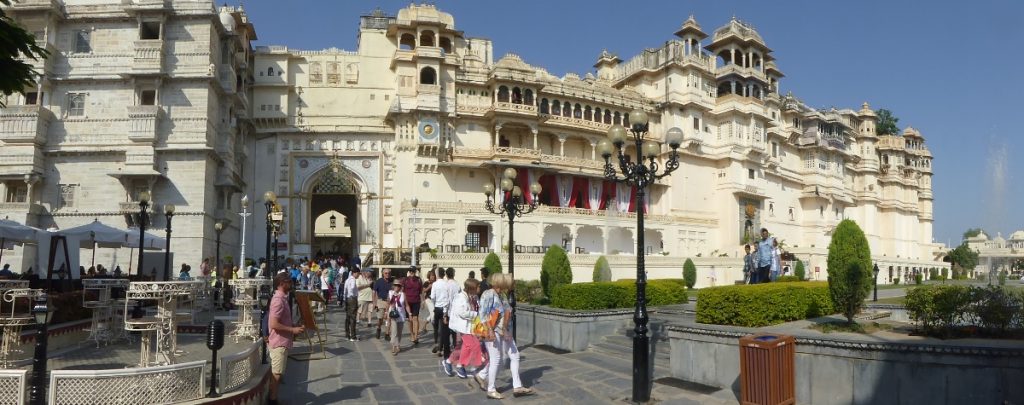
The evening promised a full programme of entertainment, a local dance performance in the museum/theatre near the ghats, dinner and then the local street dancing in the street that had been decked out with tinsel and lights leading up to the City Palace.
But before that, we hopped on a boat, and sedately cruised out across the lake to watch the sunset. A tranquil respite from the constant badgering from shopkeepers and tuktuk drivers alike.
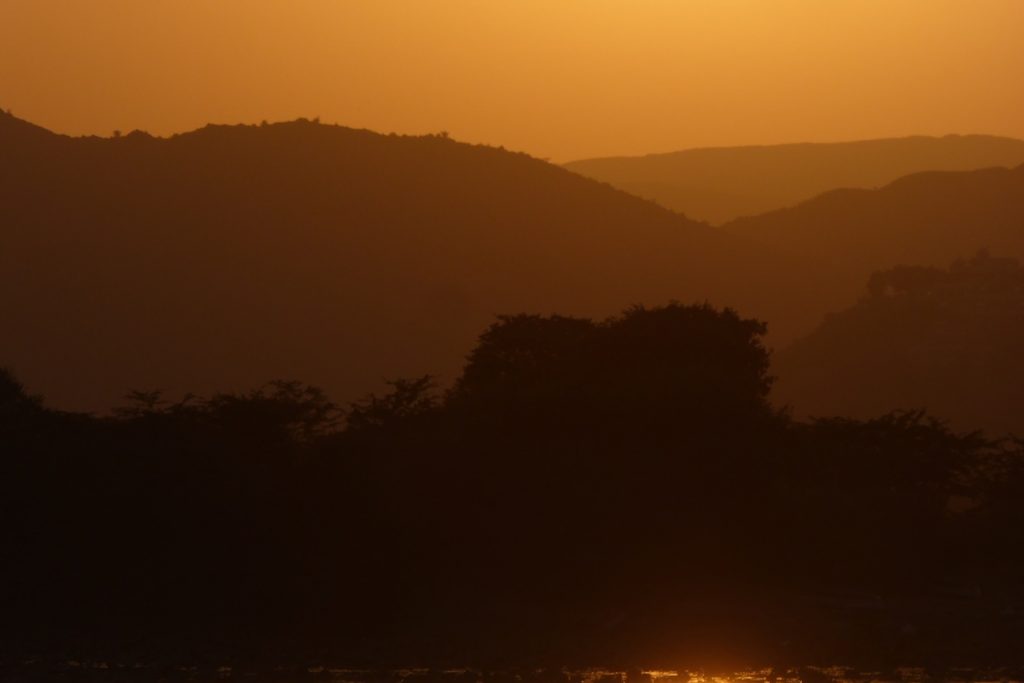
The dance performance attracted quite a crowd. We did the Indian thing and jumped the queue (Sanjeev had arranged tickets) and found some of the last few seats. The performances consisted of a number of dances performed by dazzlingly dressed women, and a dour looking (drably clad) male puppeteer. The ladies danced balancing burning pots on their heads and the puppeteer draws gasps from the crowd as he made his puppet lose his head, juggle it and balance it on various parts of his body. The climax of the performance though was a 72 year old lady who’s trick was dancing balancing multiple pots on her head. As more pots were added (of decreasing size), she performed different moves to the finale where she had 11 pots (albeit some of the were stuck together). Even so they must have been about as tall as she was, and again drew gasps of amazement from the local audience. I’m not sure if it was what I’d expected, but then again I’m not sure what to expect in India. Except the unexpected.
And that’s what the street dancing was, unexpected. It’s difficult to describe, but I’ll give it a try.
Both male and females take part (all ages, seven to seventy) and each person carries two sticks. Some people seemed to have their own sticks, which were made of wood and maybe around 40 centimetres long. Participants form two rings in the street, women inside facing out and men outside facing in. When I say the street, I do mean the street, the rings of people stretch up the hill and out of sight. There are hundreds involved. The music when it starts has a kind of Indian flavour but with a electronic techno beat to it.
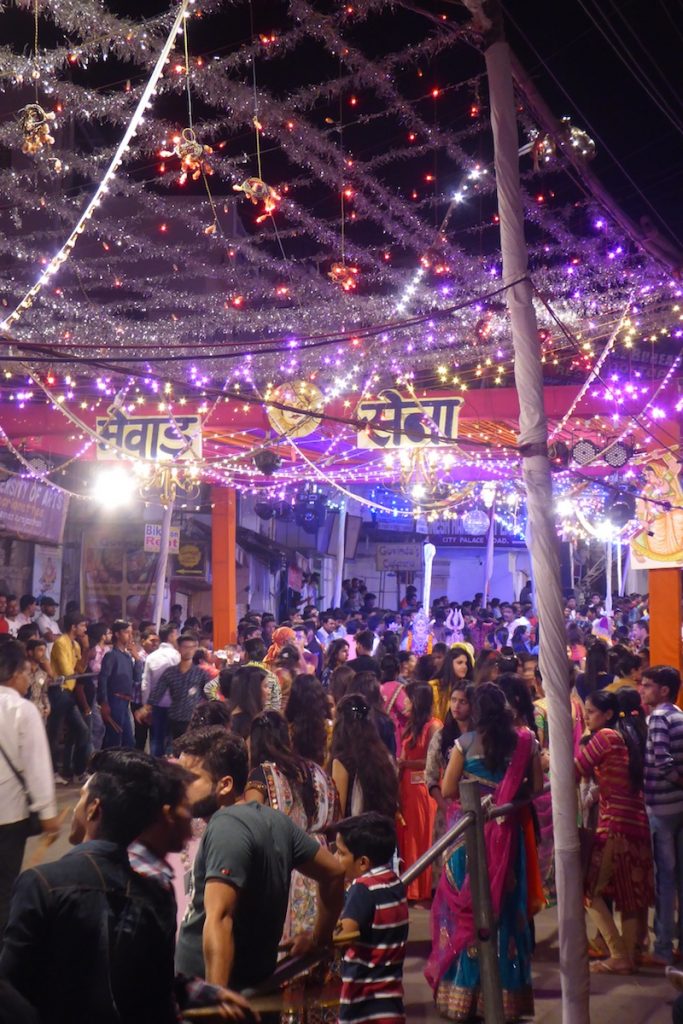
As the dance starts, opposing partner’s bang their sticks on each other’s in time to the beat, hit their own then move along one pace to the right and do the same with their new partner. It all seems quite free format, people do their own thing, spinning around and twirling their sticks. It’s a colourful, loud, rhythmic mass of people, some are laughing and seem to be having a great time, others seem a bit more serious. It seems to go on for a while, and as we leave the tempo and the volume step up a level as the dance reaches its conclusion.
Udaipur is establishing itself as our favourite place so far in India. And another stroll to the lake and around the palace the next morning don’t dispel that feeling. Of all the places we’ve been, this feels the most relaxed, or at least we do. Meandering through the streets and alleys, we look at some small pictures in card mounts. A man comes out and invites us in to look at more. My first instinct is that this is another vendor just eager to sell us anything he can. My cynicism this time is unfounded.
He actually turns out to be the artist, and he shows us some of his better pieces of work (his son, also an artist, has some of his work hanging inside although that is more 21st century Picasso than classical Rajasthan). The detail is astounding, Helen can’t believe it’s all hand made. The card mounted pictures turn out to be hand painted on silk (or similar), and he has larger images, all depicting Hindu sacred animals or depictions of Rajasthan. Incredibly, the card pictures are marked up at between 30 and 50 rupees and the larger pictures 1000 (30 to 50 pence and £10) and as they will be easy to carry we actually buy some!
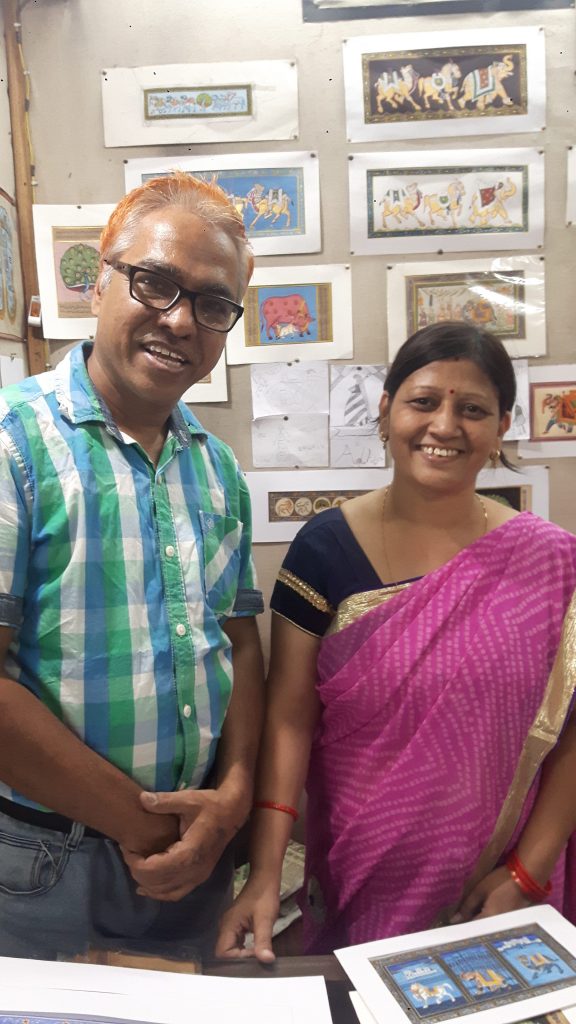
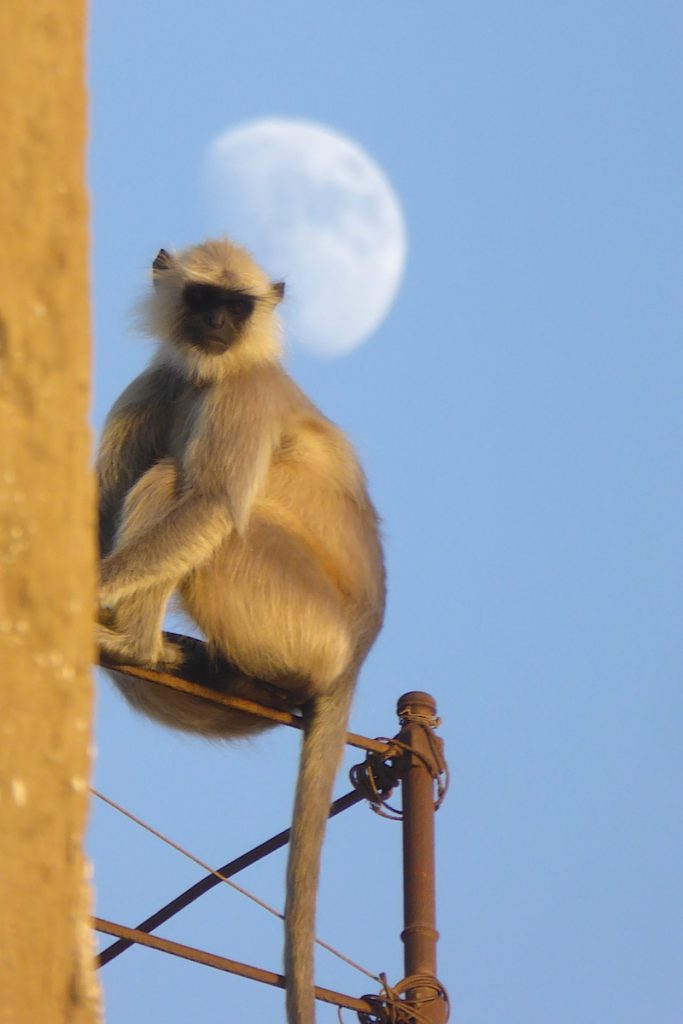
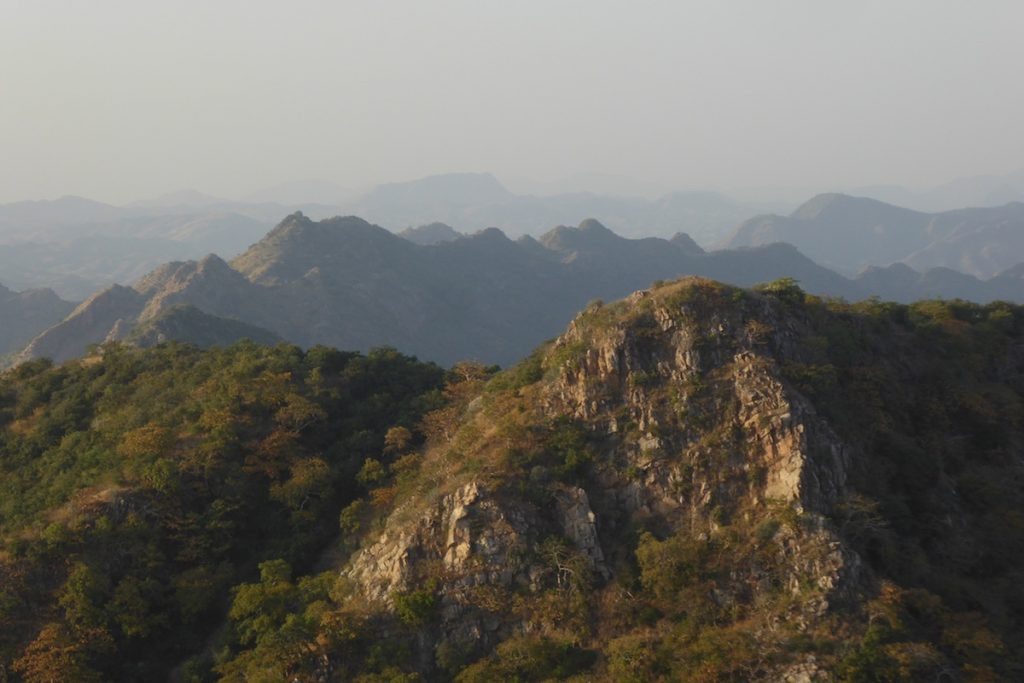
Our final trip is up to the Monsoon Palace for sunset. Atop a nearby hill, it is a former hunting lodge and palace used by maharanas during the monsoon season. The palace is sadly dilapidated, but the views (attracting large crowds) are far reaching. Monkeys as well as people are in abundance too, scavenging for food and gratefully accepting any gifts and titbits.
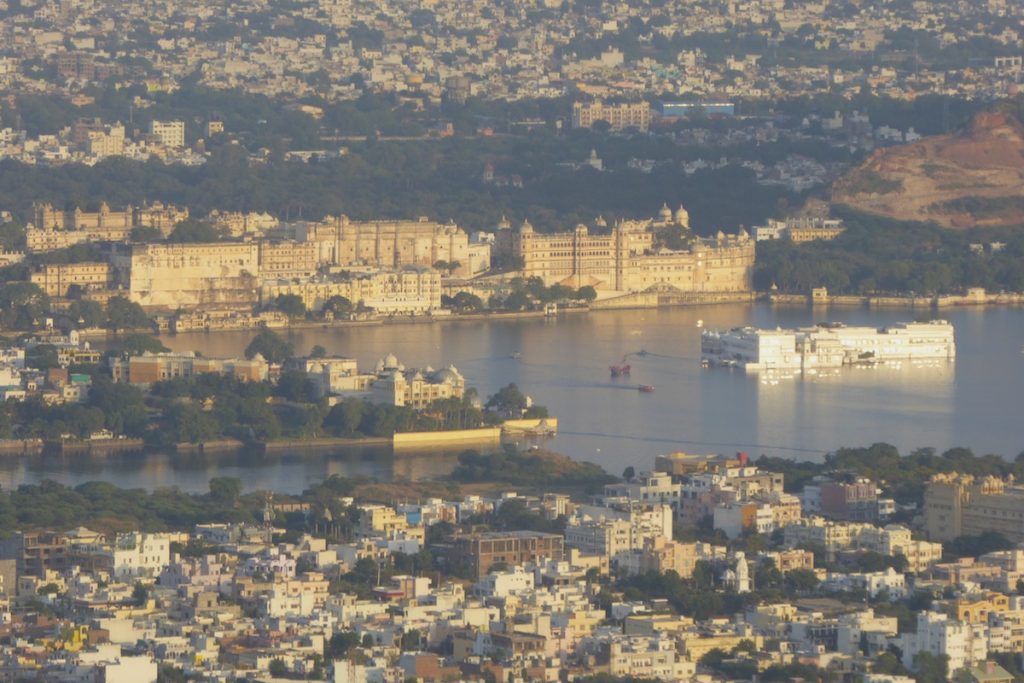
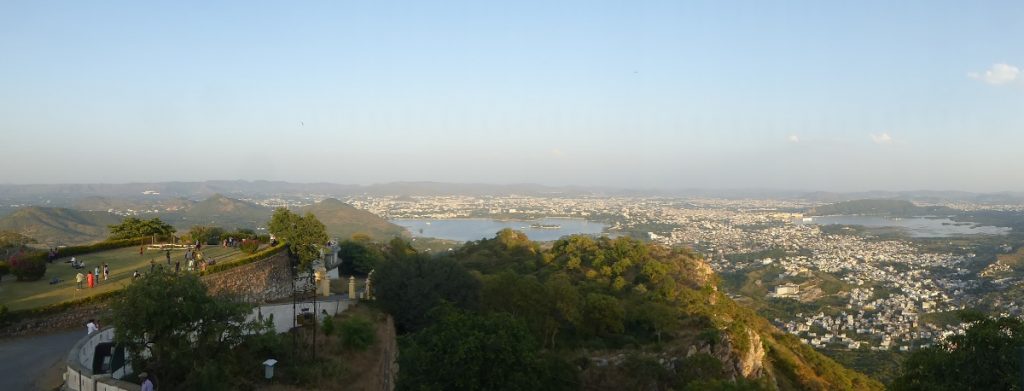
Just as we finished our stay in Pointe de Canonnieres by witnessing the Ganesh Chaturthi festival, our last night in Udaipur sees the culmination of the Dusserha festival. (Dusserha celebrates the victory of Lord Rama over the demon King Ravenna, the victory of good over evil). Brightly coloured floats with deities on board, often playing loud music, wend their way through the winding narrow streets followed by groups of people dancing to the music. We’re able to watch from above from the rooftop restaurant we’ve eaten in, but when we leave to return to the hotel we have to battle against the flow and work our way through the throng and the deafening music. In the streets alongside the revellers are camels, horses (sadly looking very scared in the midst of the noise) and even an elephant. Some young men are jumping about wildly and it is more reminiscent of a rave than a religious celebration.
If this festival in a small city is this frenetic then what would Diwali or Holi in a huge city be like?
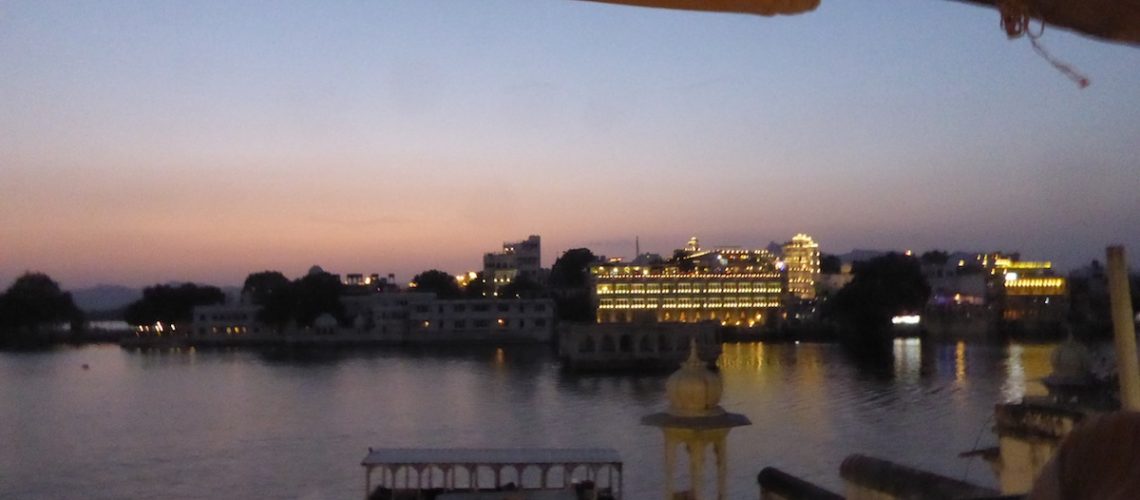
2 thoughts on “The White City 🇮🇳”
Brian and Inare so envious of your time at the festival- really exciting! Look out for paintings using a brush with a single camel hair-it would certainly give me the hump if I had to paint with one…… Loved the photos too. Hilary
Fantastic! Memories that will stay with you both forever.
M+D